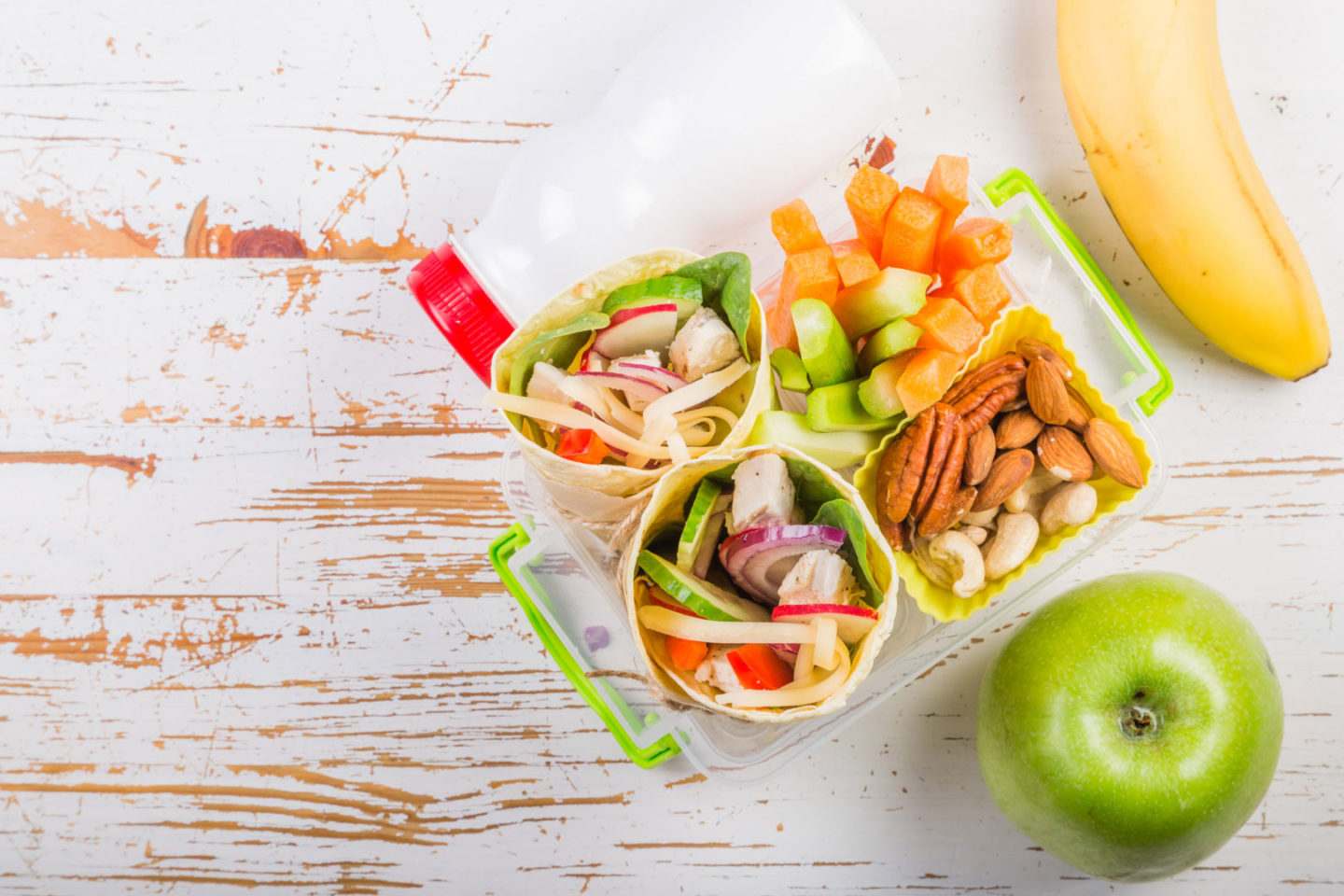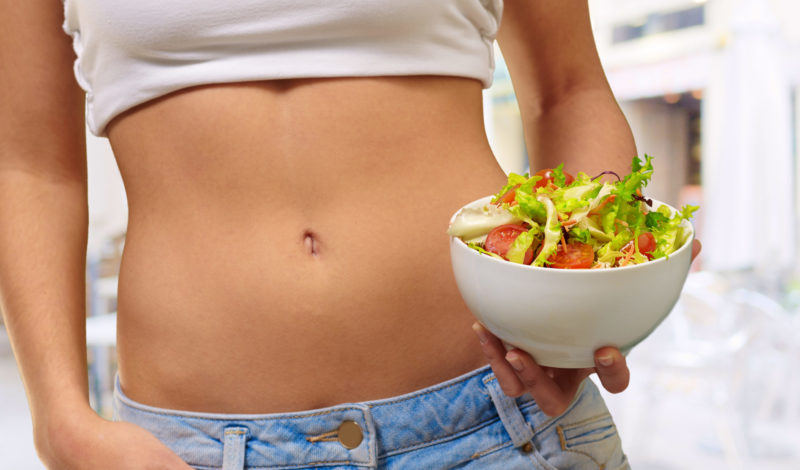We eat what we like. And we absorb important nutrients with our food. However, thorough chewing alone is not enough [...]

This food will make your gut happy
…and of course, you too! For a while now scientists have been investigating the connection between emotions and the intestinal flora. The research is not quite that far advanced yet, but there are already first indications that a wrong diet also influences the mind. Even psychotherapists are now taking a closer look at nutrition in order to increase the success of therapy. In short: if the gut is not happy, you are not either. Probiotic and fiber-rich foods are the key. Here you can find out which foods contain as much of it as possible.
We, humans, are actually herbivores, that is why you do everything right with vegetables, fruit, and grain on the menu. If you are wondering whether only a vegetarian diet can bring success, there is an all-clear. Your intestine can also process meat, but it needs help from vegetables for this. Eat what’s good for you, as long as it includes these three favorite substances that your gut loves: fiber, resistant starch, and lactic acid bacteria.
Dietary fiber – not only for vegetarians
Fiber is found mainly in plant foods such as fruits, vegetables, nuts, and cereals. It’s the fibers of the plants that your gut usually likes the most. In the stomach, they thicken the food to a paste. This will fill you up longer. Some fiber binds water and then swells in the intestine. As a result, the food paste gets more and in order the pressure doesn’t get too high in the gut, the mass has to get out quickly. And that means: no chance for constipation. Other dietary fibers are mixed into a tasty porridge for your intestinal bacteria. For example, they keep the mucous membrane in the intestines fit. That’s why, if you had stomach pains as a child, you probably got porridge or grated apple. These fibers have rebuilt your intestinal mucosa.
Dietary fiber, above all, feeds the good bacteria in the intestine. The more you have, the better, because the good ones keep the bad ones in check. Bad intestinal bacteria spread if you eat too much meat or finished products containing lots of fat and sugar. Sausages and rolls is therefore not for the good intestinal bacteria. If you were to eat a large salad with it, they would get enough food and your intestinal flora will stay in balance.
The “Deutsche Gesellschaft für Ernährung” (German Nutrition Society) recommends 30 grams of dietary fiber per day for an adult. The nutrition rule “five a day” explains it more simply. If you eat five hands full of fruit and vegetables a day, your gut will get plenty of fiber and will thank you for it.
Example of foods containing many dietary fibers:
- Legumes
- Nuts (especially natural pistachios)
- Apples (especially the skin)
- Oat flakes
- Asparagus
- Chicory
- Artichokes
- Endive
- Chia seeds and millet.
Resistant starch – makes your gut strong
Actually, the resistant starch belongs to the dietary fibers. It occurs when starchy plant fibers are boiled or baked and then cooled down again. Potatoes, peas, beans, wholegrain bread and rice are suppliers of resistant starch and are a good source of nutrition for your intestinal bacteria. Some of the bacteria decompose the starch in the large intestine, producing butyric acid. The intestinal mucosa and blood vessels in the intestinal wall need this butyric acid urgently. It ensures that the mucous membrane remains stable and keeps toxins and pathogens away. At the same time, butyric acid ensures that the pH value in the intestine is kept low. This counteracts inflammation and reduces the risk of intestinal cancer.
Potato salad and sushi are a treat for your gut (for you probably only if you eat both separately). The structure of the starch remains intact even if you warm up your food. Many stews taste even better the more you heat them up. And that tastes good for your intestines too.
Lactic acid – acid makes you healthy
Our intestinal bacteria love it sour. For a sufficiently sour intestinal flora, you need a lot of lactic acid bacteria, and they are found in yogurt, sauerkraut, and pickled vegetables, which is why it is one of the so-called probiotic foods. The little guys’ names are Lactobacilli and Bifidobacteria, and they are called lactic acid bacteria simply because they produce lactic acid while they bathe in your food. It predigests your food, and this may not sound very nice, but it is a sophisticated process. Because you eat both bacteria and their lactic acid with them. They get into your gut, multiply and lactic acid offers them a perfect environment to do their work. Their most important task is to combat putrefactive bacteria. But they can only do that if they are in the majority. That’s why good food also brings many lactic acid bacteria. They ensure a balanced intestinal flora which in turn, ensures a strong immune system. Lactic acid bacteria also produce lactase and some important vitamins. Lactase breaks down lactose, which is milk sugar. If you suffer from lactose intolerance, you can relieve the symptoms with lactic acid bacteria (e.g. with the help of the probiotic LACFRU.pro).
However, lactic acids are destroyed when you heat them up. You can find the living lactic acid bacteria in natural yogurt. People in the supermarket usually preserve the sauerkraut with heat. This means the end for lactic acids. If you want to give your intestines a treat, take fresh sauerkraut from the organic food store, health food store or weekly market. This is not cooked but fermented. In this process, vegetables are placed in salt varnishes and sealed airtight. This is fascinating because the lactic acid bacteria multiply all by themselves. There are many famous dishes that are made according to this principle, such as the traditional Korean dish kimchi (fermented Chinese cabbage), Japanese miso paste, pickles and fermented kombucha tea.
You’ll find lactic acid bacteria in:
- Yogurt, kefir
- Sauerkraut
- Pickled vegetables
- Kombucha tea
- Apple cider vinegar
- Cheddar cheese, mozzarella, parmesan, gruyere and gouda
- Kimchi and Miso.
Roughly speaking: Eat lots of vegetables, fruit, cereals, nuts, yogurt, cheese, kefir, sauerkraut, and pickled vegetables. This will make your gut very happy.

